Botanical Name: Calamagrostis x acutiflora ‘Karl Foerster’
Common Name: feather reed grass
Family: Poaceae
Distribution/Origin: garden origin
Leaf: narrow stiff green blades
Bud:
Flower: tightly vertical flower stalks bearing purplish green plumes/panicles
Fruit/Seed: grains
Stem/Bark:
Size: 3-6’ height, 2-3’ spread
Habit: spreading, arching
Form: clumping
Soil conditions: average, rich, well drained, tolerates poor soils
Moisture: consistent moisture
Sun: full sun
Exposure: tolerates wet soil, erosion, black walnut, air pollution
Landscape use: tall border, winter interest, naturalized areas, focal point in beds, wet sites, blooms May-February, mass plantings
Notes: does well in heavy wet soils unlike most ornamental grasses

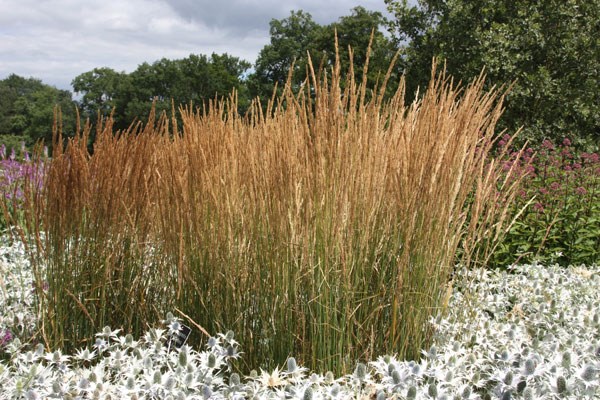


Botanical Name: Carex buchananii
Common Name: leatherleaf sedge
Family: Cyperaceae
Distribution/Origin: New Zealand
Leaf: stiff orange bronzy brown blades, curving tips
Bud:
Flower: brown flowering spikes
Fruit/Seed:
Stem/Bark:
Size: 1-3’ height, 1-3’ spread
Habit: spreading
Form: clumping
Soil conditions: fertile, well draining
Moisture: medium
Sun: full sun to partial shade
Exposure:
Landscape use: rock garden, spring interest, beds, borders, containers, blooms in summer
Notes: self seeds mostly




Botanical Name: Carex flagellifera
Common Name: Glen Murray tussock sedge
Family: Cyperaceae
Distribution/Origin: New Zealand
Leaf: strap like blades, thin
Bud:
Flower: light brown flower spikes
Fruit/Seed:
Stem/Bark:
Size: 1-3’ height, 1-3’ spread
Habit: spreading
Form: clumping, tufted appearance
Soil conditions: well drained, average, fertile
Moisture: moist
Sun: full sun to partial shade
Exposure:
Landscape use: borders, beds, low maintenance gardens, garden prairie planting
Notes: 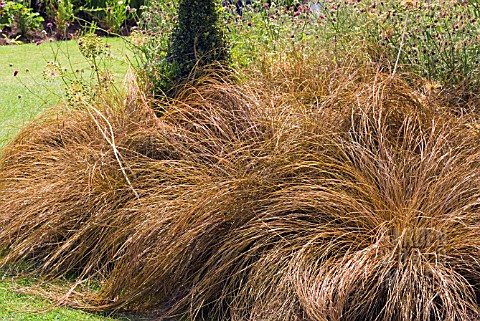



Botanical Name: Carex morrowii
Common Name: Japanese sedge grass
Family: Cyperaceae
Distribution/Origin: Japan
Leaf: narrow blades
Bud:
Flower: insignificant
Fruit/Seed:
Stem/Bark:
Size: 1-1.5’ height, 1-2’ spread
Habit: arching, spreading
Form: clumping
Soil conditions: rich loams
Moisture: moist
Sun: full shade to partial sun
Exposure: tolerant of deer, heavy shade, erosion, wet sites
Landscape use: ground cover, naturalized areas, rain garden
Notes: in very hot climates with little shade the leaves may bleach to a yellow




Botanical Name: Fargesia nitida
Common Name: fountain bamboo
Family: Poaceae
Distribution/Origin: Asia
Leaf: narrow elliptic leaves
Bud:
Flower: hermaphrodite
Fruit/Seed:
Stem/Bark: darker culms when young
Size: 10-15’ height, 10-15’ spread
Habit: arching canes, erect
Form: clumping
Soil conditions: loamy clays, fertile, well draining
Moisture: even moisture
Sun: full sun to partial shade
Exposure:
Landscape use: woodland garden, sunny edge, dappled shade, hedge, screening
Notes: the only bamboo that doesn’t viciously spread
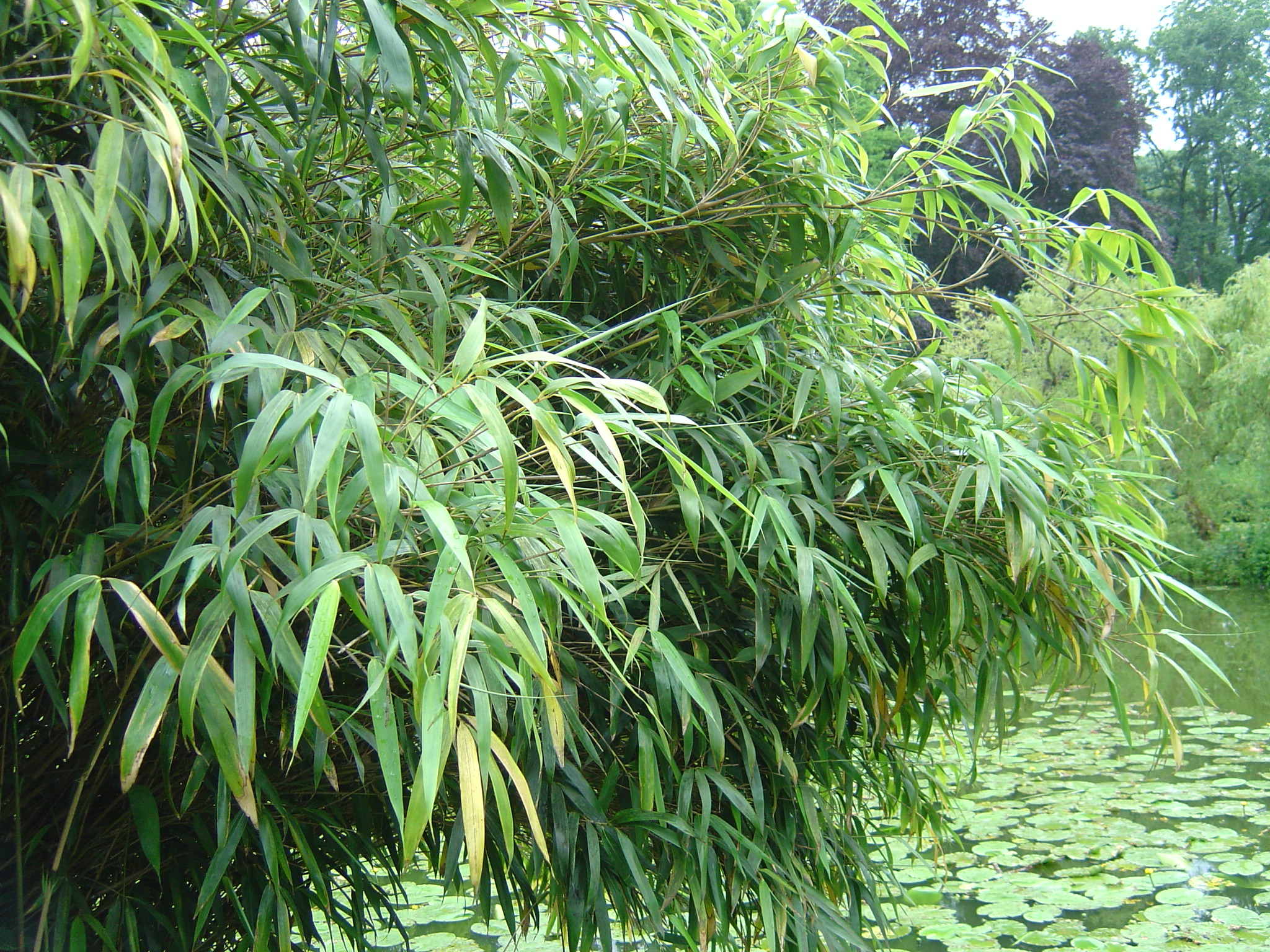


Botanical Name: Festuca glauca
Common Name: blue fescue
Family: Poaceae
Distribution/Origin: central and southern Europe
Leaf: glaucus narrow blades, semi evergreen, finely textured
Bud:
Flower: light green flowers with purple tinge, terminal panicles, not showy
Fruit/Seed: buffy seed heads, wheat like
Stem/Bark:
Size: up to 1’ height, up to 1.5’ spread
Habit: tight mounds, arching
Form: clumping, dome shaped
Soil conditions: well drained, average
Moisture: dry to medium
Sun: full sun
Exposure: tolerant of drought, dry soil, shallow rocky soils black walnut, air pollution
Landscape use: ornamental beds, naturalized areas, mass plantings, borders, beds
Notes: plants require frequent division as clumps tend to die out in the center, good to rejuvenate every 2-3 years




Botanical Name: Helictotrichon sempervirens
Common Name: blue oat grass
Family: Poaceae
Distribution/Origin: Europe
Leaf: linear leaves, simple
Bud:
Flower: large open panicles, flowering spikelets
Fruit/Seed:
Stem/Bark:
Size: 2-3’ height, 2-3’ spread
Habit: erect, arching stems
Form: compact tussocks, clumping
Soil conditions: well drained, average
Moisture: even moisture
Sun: full sun
Exposure: can handle poor soils
Landscape use: mass plantings, accent color, borders, beds, ground cover, filler
Notes:




Botanical Name: Miscanthus sinensis
Common Name: maiden grass
Family: Poaceae
Distribution/Origin: eastern Asia
Leaf: thin, linear, simple
Bud:
Flower: purplish plumes, spike inflorescence, pink to reddish purple
Fruit/Seed:
Stem/Bark:
Size: 6-9’ height, 3-6’ spread
Habit: arching, dense, upright
Form: oval, vertical, vase
Soil conditions: well drained,
Moisture: even moisture
Sun: full sun
Exposure: tolerant to drought, erosion, air pollution
Landscape use: bloom time Aug-Oct, fall interest, mixed border, perennial beds, screening, tall background
Notes: do not cut back in winter, stems are hollow and will rot out if exposed to water and cold



Botanical Name: Ophiopogon planiscapus 'Nigrescens'
Common Name: black mondo grass
Family: Asparagaceae
Distribution/Origin: Asia
Leaf: black linear leaves
Bud:
Flower: bell shaped, light pink, racemes borne on dark stems
Fruit/Seed: globular bluish black berries, glossy
Stem/Bark:
Size: up to 1’ height, 1’ spread
Habit: low growing, arching
Form: clumping
Soil conditions: rich, humusy, well drained
Moisture: medium, can tolerate drought
Sun: full sun to partial shade
Exposure: somewhat tolerant of drought
Landscape use: bloom time July-August, groundcover, interesting garden accent, winter interest, borders, beds
Notes: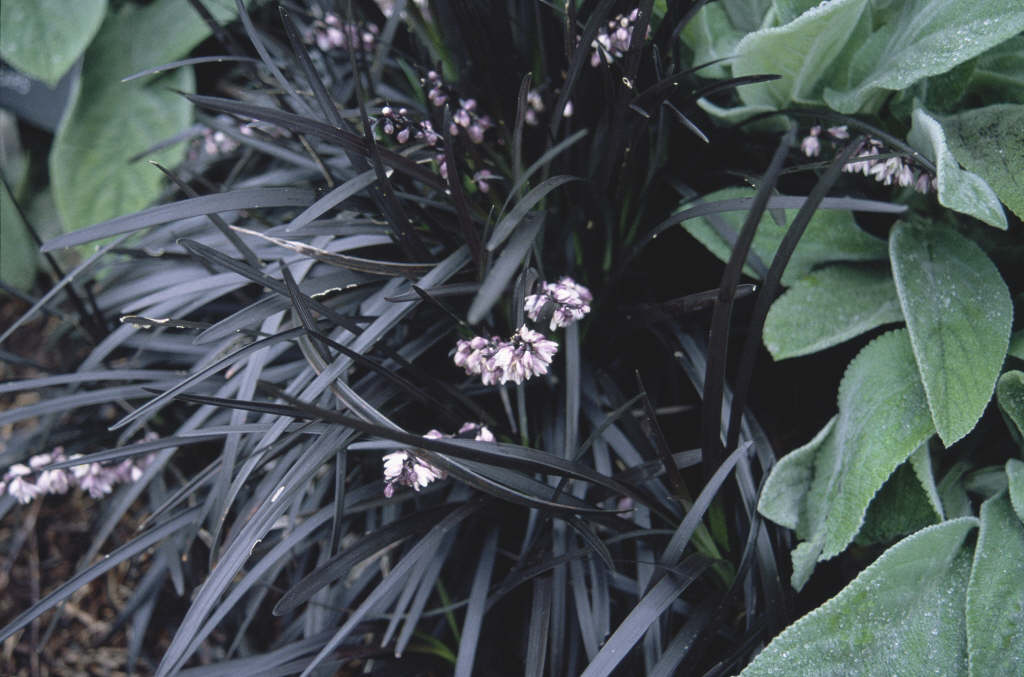



Botanical Name: Panicum virgatum
Common Name: switch grass
Family: Poaceae
Distribution/Origin: garden origin
Leaf: linear, simple, sheathing
Bud:
Flower: spikelets, open panicles, perfect
Fruit/Seed: grain, red green to brown
Stem/Bark:
Size: 1-3’ height, 1-3’ spread
Habit: arching, stiffly upright,
Form: oval, vertical
Soil conditions: humsy, rocky, gravelly, well drained
Moisture: low
Sun: full sun
Exposure:
Landscape use: accent plant, container, fall interest, mass plantings, mixed borders, flowers July-August
Notes:




Botanical Name: Pennisetum alopecuroides
Common Name: fountain grass
Family: Poaceae
Distribution/Origin: Australia, eastern Asia
Leaf: leathery, linear, glabrous surface
Bud:
Flower: panicle like, spikelets, showy dark red-brown
Fruit/Seed: grain, long purple hairs
Stem/Bark:
Size: 1-3’ height, 1-3’ spread
Habit: arching, open, upright
Form: round, vase, clumping
Soil conditions: average, well draining
Moisture: even moisture
Sun: full sun to partial shade
Exposure: tolerant of drought, erosion, wet soil, black walnut, air pollution
Landscape use: container planting, group or mass plantings, mixed shrub border, rock garden, Spring interest
Notes:
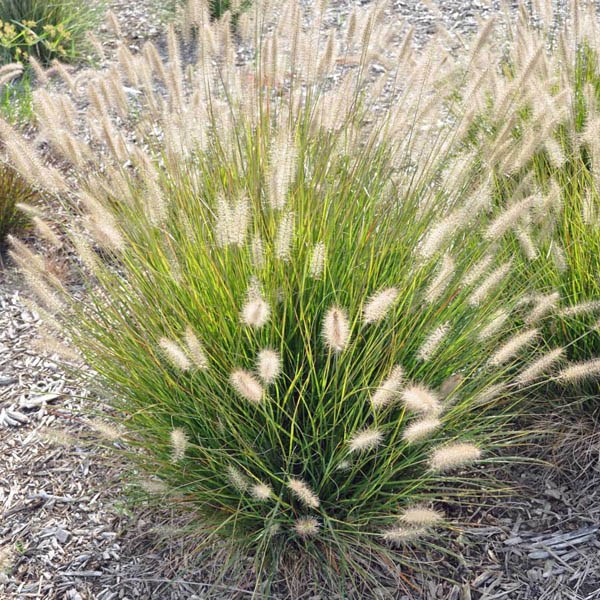



Botanical Name: Phyllostachys aurea
Common Name: fish pole bamboo
Family: Poaceae
Distribution/Origin: China
Leaf: linear, lanceolate, simple
Bud:
Flower: perfect, panicle like spikelet, showy brown to purple
Fruit/Seed: brown grains
Stem/Bark: compressed internodes on lower part of canes, showy, smooth, multi stemmed
Size: 13-26’ height, 6-13’ spread
Habit: arching, spreading, stiffly upright, twiggy
Form: clumping, oval, vertical
Soil conditions: loams, acidic, well drained
Moisture: low
Sun: full sun to partial shade
Exposure:
Landscape use: accent plant, container planting, filler, group or mass planting, screening, windbreak
Notes: well suited for making pipes, very hard durable canes useful for constructing many things




Botanical Name: Phyllostachys bambusoides
Common Name: giant timber bamboo
Family: Poaceae
Distribution/Origin: Asia
Leaf: glossy green, lance shaped
Bud:
Flower:
Fruit/Seed:
Stem/Bark: dark green culms, thick, straight, grooves alternating on sides between nodes
Size: 25-70’ height, 8-13’ spread
Habit: upright
Form: clumping
Soil conditions: well drained, loams, fertile, rich
Moisture: moist
Sun: full sun to partial shade
Exposure: can become invasive in favorable conditions
Landscape use: large container plantings, naturalized areas
Notes: one of the largest temperate bamboos


Botanical Name: Phyllostachys nigra


Botanical Name: Phyllostachys nigra
Common Name: black stem bamboo
Family: Poaceae
Distribution/Origin: south east Asia, Japan, China
Leaf: simple, lanceolate, glabrous surfaces
Bud: alternate arrangement
Flower: panicle-like spikelet, showy brown
Fruit/Seed: grain, not showy
Stem/Bark: smooth, multi stemmed trunk, dark in color (unless deep shade)
Size: 22-32’ height, 16-22’ spread
Habit: arching, dense, spreading, stiffly upright, twiggy
Form: oval, vertical
Soil conditions: acidic, humus rich, well draining
Moisture: moderate
Sun: filtered sun, full sun, partial shade
Exposure:
Landscape use: accent plant, container planting, filler, mass or group planting, hedge row
Notes: usually only flowers if about to die




Botanical Name: Pleioblastus fortunei
Common Name: dwarf whitestripe bamboo
Family: Poaceae
Distribution/Origin: Japan
Leaf: slender pale green canes, variegated with white
Bud:
Flower:
Fruit/Seed:
Stem/Bark:
Size: 1-3’ height, 3-6’ spread
Habit: low growing, tufting, spreading
Form: upright, clumping
Soil conditions: fertile, humus rich, well drained
Moisture: even moisture
Sun: full sun to partial shade
Exposure: protect from cold drying winds
Landscape use: beds, borders, accent plant, container gardening, screens
Notes: aggressive spreading




Botanical Name: Sasa veitchii
Common Name: Veitch’s bamboo
Family: Poaceae
Distribution/Origin: Japan
Leaf: broadly lanceolate, papery brown on the margins
Bud:
Flower:
Fruit/Seed:
Stem/Bark:
Size: 4-8’ height, 6-13’ spread
Habit: dense, spreading
Form: clumping, erect
Soil conditions: fertile, humus rich, well drained
Moisture: moist
Sun: full sun to partial shade
Exposure: protect from cold winds
Landscape use: mass plantings, borders, beds, accent plant
Notes: vigorously spreads so plant with caution




Botanical Name: Stipa tenuissima
Common Name: Mexican feather grass
Family: Poaceae
Distribution/Origin: South America
Leaf: fine foliage, very thin hairs, narrow, bright green
Bud:
Flower: panicle like spikelets, white to green, arching, airy appearance
Fruit/Seed: grain
Stem/Bark:
Size:
Habit: stiffly upright
Form: clumping, vase shaped
Soil conditions: rocky, gravelly or dry,moderately fertile well draining
Moisture: drought tolerant
Sun: full sun
Exposure:
Landscape use: accent plant, container planting, xeriscaping, mass or group plantings, border
Notes: divide in the spring

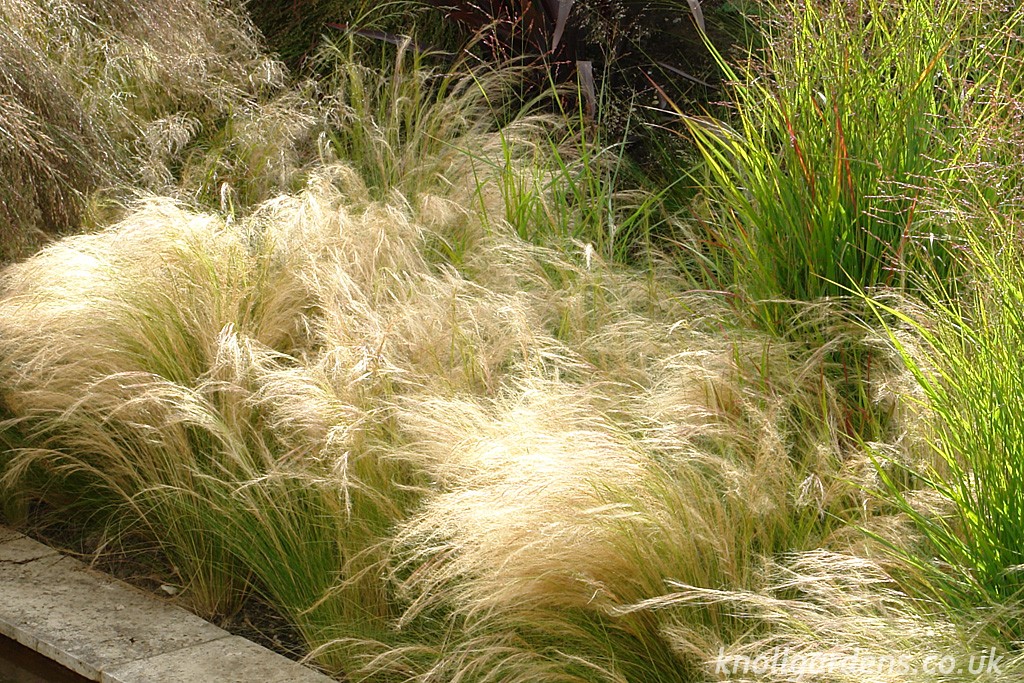


No comments:
Post a Comment